
Rabbit Anti-PPARGC1A antibody
LEM6; PGC-1 Alpha; PGC1 Alpha; Ligand effect modulator 6; Peroxisome proliferative activated receptor, gamma, coactivator 1 alpha; Peroxisome proliferative activated receptor, gamma, coactivator 1 ; Peroxisome proliferator activated receptor gamma coactiv
View History [Clear]
Details
Product Name PPARGC1A Chinese Name 过氧化物酶体增殖物激活受体γ辅激活子1α抗体 Alias LEM6; PGC-1 Alpha; PGC1 Alpha; Ligand effect modulator 6; Peroxisome proliferative activated receptor, gamma, coactivator 1 alpha; Peroxisome proliferative activated receptor, gamma, coactivator 1 ; Peroxisome proliferator activated receptor gamma coactivator 1 alpha; PGC 1 (alpha); PGC 1 alpha; PGC 1v; PGC1; PGC1(alpha); PGC1A; PGC1v; PPAR gamma coactivator 1 alpha 3 ligand effect modulator 6; PPAR gamma coactivator 1 alpha; PPAR gamma coactivator 1; PPAR gamma coactivator variant form; PPARGC 1 alpha. literatures Research Area immunology transcriptional regulatory factor Kinases and Phosphatases Immunogen Species Rabbit Clonality Polyclonal React Species Human, Mouse, (predicted: Rat, Chicken, Dog, Pig, Cow, Horse, Rabbit, ) Applications WB=1:500-2000 ELISA=1:5000-10000 IHC-P=1:100-500 IHC-F=1:100-500 Flow-Cyt=1μg/Test IF=1:100-500 (Paraffin sections need antigen repair)
not yet tested in other applications.
optimal dilutions/concentrations should be determined by the end user.Theoretical molecular weight 88kDa Cellular localization The nucleus Form Liquid Concentration 1mg/ml immunogen KLH conjugated synthetic peptide derived from human PGC-1: 601-700/798 Lsotype IgG Purification affinity purified by Protein A Buffer Solution 0.01M TBS(pH7.4) with 1% BSA, 0.03% Proclin300 and 50% Glycerol. Storage Shipped at 4℃. Store at -20 °C for one year. Avoid repeated freeze/thaw cycles. Attention This product as supplied is intended for research use only, not for use in human, therapeutic or diagnostic applications. PubMed PubMed Product Detail The protein encoded by this gene is a transcriptional coactivator that regulates the genes involved in energy metabolism. This protein interacts with PPARgamma, which permits the interaction of this protein with multiple transcription factors. This protein can interact with, and regulate the activities of cAMP response element binding protein (CREB) and nuclear respiratory factors (NRFs). It provides a direct link between external physiological stimuli and the regulation of mitochondrial biogenesis, and is a major factor that regulates muscle fiber type determination. This protein may be also involved in controlling blood pressure, regulating cellular cholesterol homoeostasis, and the development of obesity (referenced from entrez gene.
Function:
Transcriptional coactivator for steroid receptors and nuclear receptors. Greatly increases the transcriptional activity of PPARG and thyroid hormone receptor on the uncoupling protein promoter. Can regulate key mitochondrial genes that contribute to the program of adaptive thermogenesis. Plays an essential role in metabolic reprogramming in response to dietary availability through coordination of the expression of a wide array of genes involved in glucose and fatty acid metabolism.
Subunit:
Binds MYBBP1A, which inhibits transcriptional activation by this protein. Interacts with PRDM16. Interacts with LRPPRC. Homooligomer. Interacts with LPIN1.
Subcellular Location:
Nucleus.
Tissue Specificity:
Heart, skeletal muscle, liver and kidney. Expressed at lower levels in brain and pancreas and at very low levels in the intestine and white adipose tissue. In skeletal muscle, levels were lower in obese than in lean subjects and fasting induced a 2-fold increase in levels in the skeletal muscle in obese subjects.
Post-translational modifications:
hosphorylation by AMPK in skeletal muscle increases activation of its own promoter. Phosphorylated by CLK2.
Heavily acetylated by GCN5 and biologically inactive under conditions of high nutrients. Deacetylated by SIRT1 in low nutrients/high NAD conditions.
Similarity:
Contains 1 RRM (RNA recognition motif) domain.
SWISS:
Q9UBK2
Gene ID:
10891
Database links:Entrez Gene: 422815 Chicken
Entrez Gene: 10891 Human
Entrez Gene: 19017 Mouse
Omim: 604517 Human
SwissProt: Q9UBK2 Human
SwissProt: O70343 Mouse
Unigene: 527078 Human
Unigene: 259072 Mouse
Unigene: 19172 Rat
PGC-1α是一个新发现的转录激活因子,起到高游离脂肪酸刺激胰岛α细胞分泌的重要调控作用。Product Picture
Primary: Anti-PPARGC1A (SL1832R) at 1/300 dilution
Secondary: IRDye800CW Goat Anti-Rabbit IgG at 1/20000 dilution
Predicted band size: 88 kD
Observed band size: 90 kD
Sample: Heart (Mouse) Lysate at 30 ug
Primary: Anti- PPARGC1A (SL1832R) at 1/300 dilution
Secondary: IRDye800CW Goat Anti-Rabbit IgG at 1/10000 dilution
Predicted band size: 88 kD
Observed band size: 88 kD
Sample:
Thymus (Mouse) Lysate at 40 ug
Primary: Anti-PPARGC1A (SL1832R) at 1/500 dilution
Secondary: IRDye800CW Goat Anti-Rabbit IgG at 1/20000 dilution
Predicted band size: 88 kD
Observed band size: 88 kD
Tissue/cell: mouse liver tissue; 4% Paraformaldehyde-fixed and paraffin-embedded;
Antigen retrieval: citrate buffer ( 0.01M, pH 6.0 ), Boiling bathing for 15min; Block endogenous peroxidase by 3% Hydrogen peroxide for 30min; Blocking buffer (normal goat serum,C-0005) at 37℃ for 20 min;
Incubation: Anti-PPARGC1A/PGC1 alpha Polyclonal Antibody, Unconjugated(SL1832R) 1:200, overnight at 4°C, followed by conjugation to the secondary antibody(SP-0023) and DAB(C-0010) staining
Blank control: HepG2.
Primary Antibody (green line): Rabbit Anti-PPARGC1A antibody (SL1832R)
Dilution: 1μg /10^6 cells;
Isotype Control Antibody (orange line): Rabbit IgG .
Secondary Antibody : Goat anti-rabbit IgG-AF647
Dilution: 1μg /test.
Protocol
The cells were fixed with 4% PFA (10min at room temperature)and then permeabilized with 90% ice-cold methanol for 20 min at -20℃. The cells were then incubated in 5%BSA to block non-specific protein-protein interactions for 30 min at room temperature .Cells stained with Primary Antibody for 30 min at room temperature. The secondary antibody used for 40 min at room temperature. Acquisition of 20,000 events was performed.
Bought notes(bought amounts latest0)
No one bought this product
User Comment(Total0User Comment Num)
- No comment
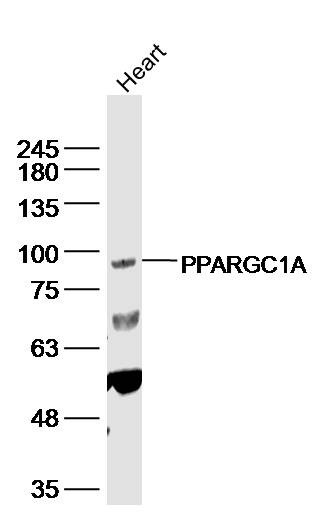
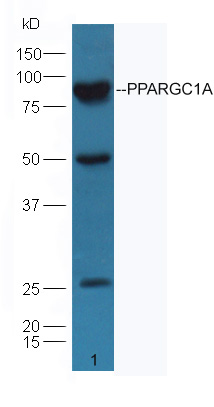
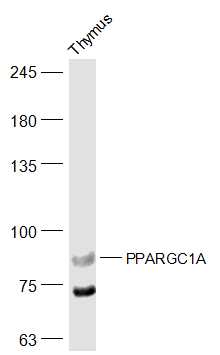
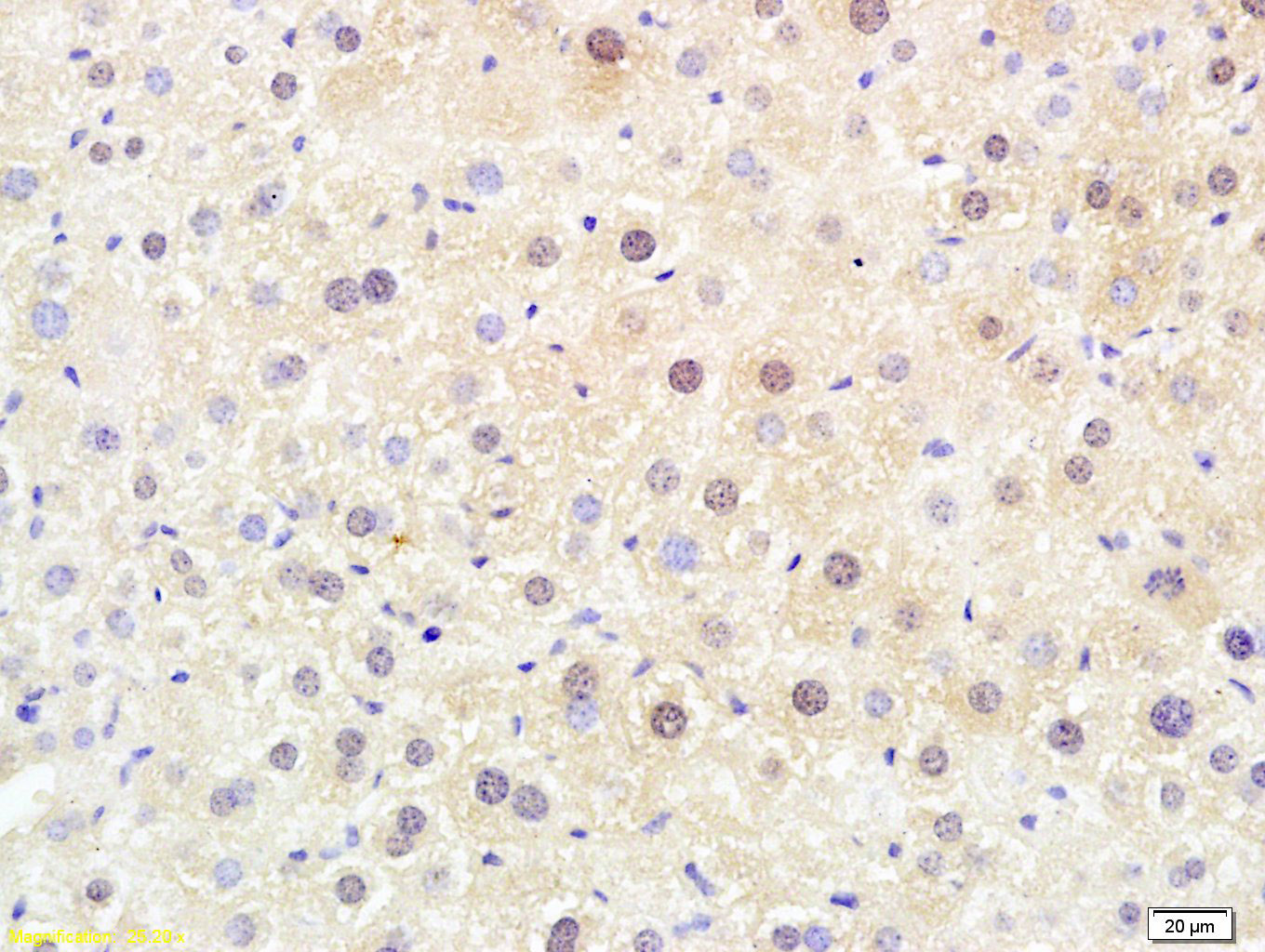
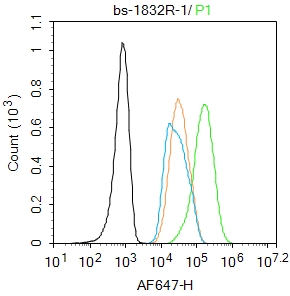


 +86 571 56623320
+86 571 56623320




